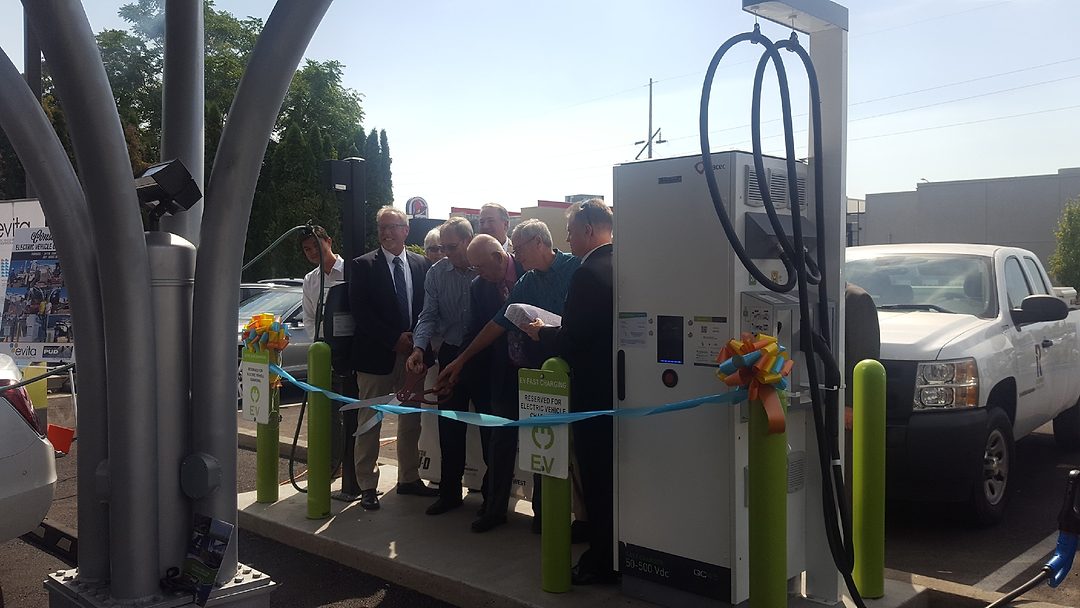
Home » Pasco powers up electric vehicle charging station
Pasco powers up electric vehicle charging station

August 29, 2018
Pasco celebrated the installation of a solar-powered electric vehicle charging station at the Court Street Starbucks on Aug. 29
The fast-charging station at 2411 W. Court St. is part of a $1 million, nine-station network along Washington state highway corridors designed to enhance interstate and intrastate electric vehicle travel.
“Project partners strategically chose the Starbucks on Court Street just off Highway 395 in Pasco because of the high traffic volume and available amenities,” said Tom Logan, owner of the Starbucks building, in a news release.
This is the first privately-owned charging station by an individual in the Electric Vehicle Infrastructure Transportation Alliance, or EVITA, project build-out. Logan contributed $110,000 toward the $170,000 project.
“It was important to me to have a presence in Eastern Washington and to help bridge the divide between eastern and western Washington with this EV fast charging station. The unique aspect of this station is that it’s solar-powered,” Logan said.
Each station can bring most electric vehicles from zero to full charge in close to 30 minutes and is capable of serving plug-in electric and plug-in hybrid cars. In addition, each station has a medium-speed charger for use by plug-in hybrid vehicles with smaller battery capacities.
EVITA recently installed stations in Kennewick, Yakima and Ellensburg, with future stations planned for Connell, Richland, Prosser, Cle Elum and George.
Energy Northwest received a $405,000 grant from the state Department of Transportation that is being used to install EV stations on Highway 395 and along interstates 82, 182 and 90. The Pasco project used $45,000 from this grant. Franklin PUD chipped in $15,000.
Remaining installation costs are funded through EVITA, a collaboration between public and private entities comprised of public utilities, municipalities, EV equipment suppliers, Greenlots, EV4 and private property owners.
Energy Northwest, the Tri-Cities Development Council and local utilities formed EVITA in 2016 to bridge the electric vehicle range gap between the two sides of the state.
Local News Auto & RV Industry
KEYWORDS august 2018




